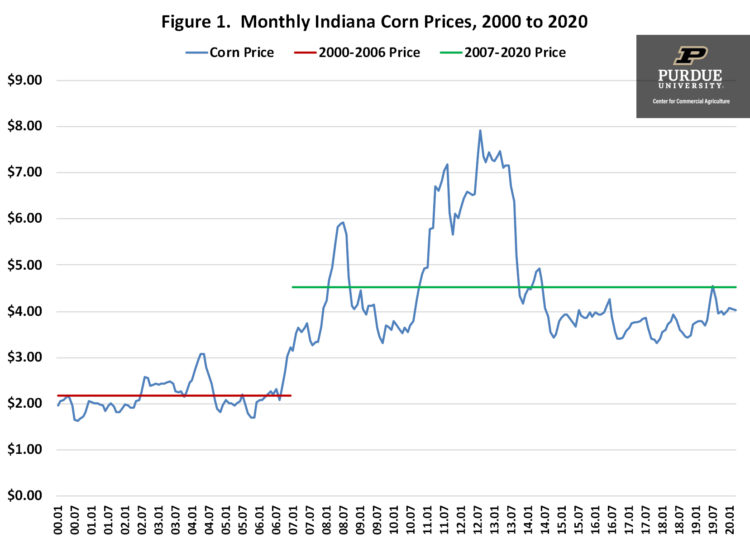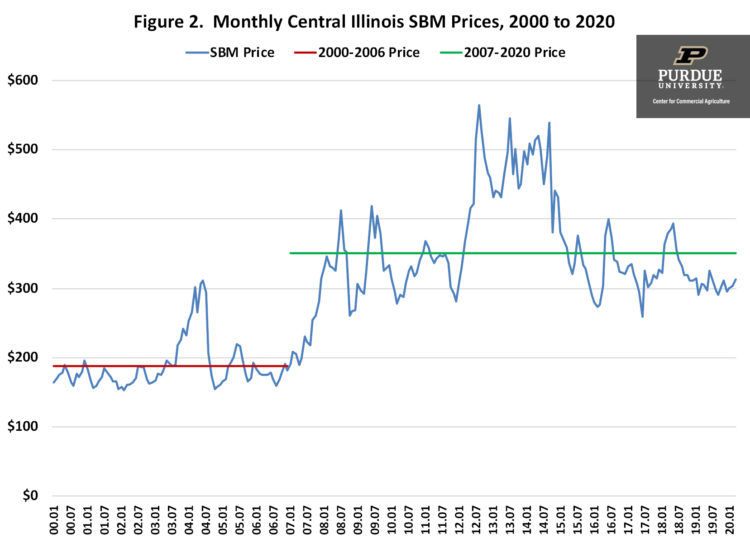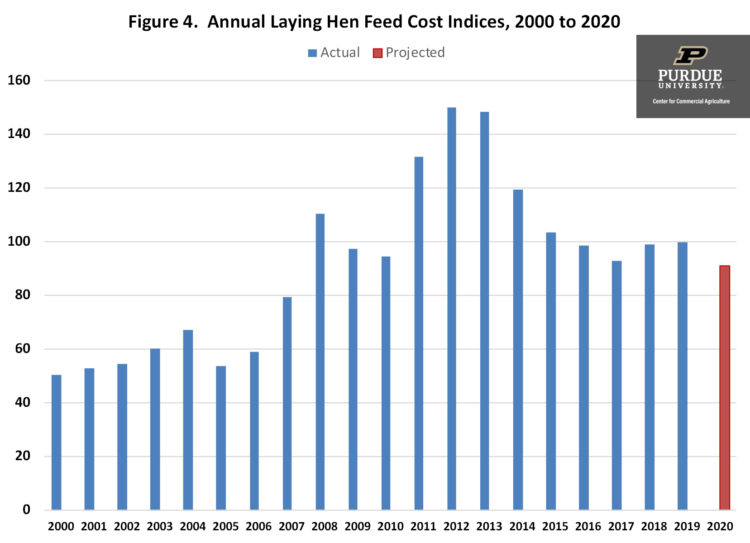May 12, 2020
Feed Cost Indices for Laying Hens
by: Michael Langemeier
This article discusses recent trends in feed costs for laying hens. A ration consisting of corn, soybean meal, dry distillers’ grain, soybean oil, and supplements was used to create the feed cost indices. Corn prices represent averages for Indiana as reported by USDA-NASS. Soybean meal and distillers’ grain prices were obtained from Feed Outlook, published monthly by USDA-ERS. Information from Agricultural Prices, a monthly USDA-NASS publication, was used to compute soybean oil and supplement prices. Future prices for corn and soybean meal in mid-May were used to project feed indices through 2020.
Figures 1 and 2 report monthly corn and soybean meal prices from January 2000 to March 2020. A distinction is made for prices before and after 2007. The period starting in 2007 is often thought to be a new price regime. Corn price averaged $2.18 per bushel from 2000 to 2006, and $4.52 per bushel from 2007 to the current month. Soybean meal price averaged $187 per ton from 2000 to 2006, and $351 per ton from 2007 to the current month. Corn and soybean meal prices are expected to remain well below the average prices since 2007 for the rest of this year.
Figure 3 presents monthly feed cost indices for laying hens from January 2000 to April 2020. The latest full year of indices, 2019, has an index of 100 so all indices outside of this year are expressed in relative terms. As with corn and soybean meal prices, a distinction is made for feed cost indices before and after 2007. The average index from 2000 to 2006 was approximately 57 while the average index since the beginning of 2007 was approximately 109. The projected indexes for May and June are 93 and 85, respectively. The indexes for the last 6 months of this year are expected to range from 84 to 86.
Annual feed cost indices for laying hens are presented in figure 4. The projections for 2020 (red bar) used corn and soybean meal futures prices in mid-May. The projected feed cost index for 2020 is 91. This suggests that feed costs for 2020 are expected to be 9 percent lower than feed costs in 2019. Of course, there is a lot of uncertainty regarding feed prices for the second half of this year.
This article discussed recent trends in feed costs for laying hens. Current projections suggest that feed costs for 2020 will be 9 percent below levels for 2019. Feed costs in the second half of this year are expected to be approximately 15 percent below those experienced in 2019. Information related to feed costs for other livestock species can be found on the web site for the Center for Commercial Agriculture.
TAGS:
TEAM LINKS:
RELATED RESOURCES
UPCOMING EVENTS
January 27 or 28, 2026
Farm Shield is more than a conference, it’s a commitment to helping agricultural families build resilience and plan for a secure future. Don’t miss this opportunity to protect your legacy!
Read MoreJanuary 9, 2026
A management programs geared specifically for farmers. Surrounded by farm management, farm policy, agricultural finance and marketing experts, and a group of your peers, the conference will stimulate your thinking about agriculture’s future and how you can position your farm to be successful in the years ahead.
Read More



